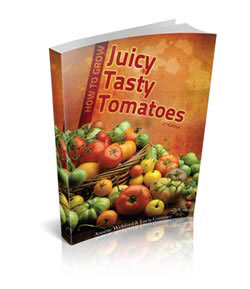Our Body’s Thrive on Raw Vegetables

Fast-growing curly kale and marogo (African spinach) growing in a veggie patch (see photo below for the same patch three weeks later!)
There’s a lot that’s been written recently about the value of raw food that includes nutritional information about many of the vegetables that we can grow in our own backyards.
But if you’re serious about the value of raw, which veggies should you concentrate on producing? Australian author and digestive health and RAW food teacher, Scott Mathias says it in half a sentence: “All greens, reds, yellows and white vegetables”.
What a pleasure!
Why Raw Food is Good for You
Mathias, who has just published his first book Understanding The Divine Gut: How to Eat Your Way to Ultimate Digestive Health, explains that live plant-based food is much easier to digest than cooked food, and it provides more nutrients, at the same time minimizing the impurities that enter our bodies.
Furthermore, raw foods (vegetables, fruits, nuts and protein plants like hemp) provide digestive enzymes of their own, which means that the stomach doesn’t have to do this job.
Enzymes, he explains, are essential, not least for getting rid of ingredients (including chemicals) we don’t need. They break down the food that we eat and release the valuable nutrients that we need to live. Enzymes give us energy, enable cells to grow and repaid, and basically act as our personal body building blocks.
Old people, and sick people, have fewer enzymes, while people with bad dietary habits need more enzymes to digest the food that they eat. And if we don’t eat the right food, it becomes a vicious circle. He learnt the hard way, having been brought up on a diet of meat, dairy and wheat that his digestive system couldn’t cope with.
From personal experience, he has concluded, “proper nutrition might just play a major part in the healing of illness”.
And while you can’t produce everything you need to be completely health, a well-kept veggie garden certainly is a good start.
So What to Grow in Your Own Backyard?
Really anything that will grow in the conditions in your garden at any particular time of the year. Tomatoes (a powerful antioxidant), spinach, eggplants and peppers are always rewarding, as are the many herbs, like parsley and rocket that you can add to salads and other raw meals.
Mathias chooses to balance his metabolism by eating caloric-balanced foods – “fruit, red and green natural foods” – that are in season. Top of his list are:
- tomatoes,
- strawberries,
- beetroot (another antioxidant),
- carrots,
- kale, that he points out has “five times more protein by volume than cow meat”.
In addition he advocates any “indigenous foods” that might be available in your part of the world.
One interesting African example is marogo (Amaranthus), a type of indigenous spinach that has been attracting quite a lot of attention recently. Easy to grow, it is said to have even more nutrients than kale, and tastier than kale, which can be quite bitter.
With the world of the Internet at your fingertips, you can get seeds from anywhere on the planet and cook what is indigenous in other parts of the world – from African marogo to American heirloom tomatoes. What’s stopping you? And while you’re at it, don’t forget about companion planting. Your harvest will definitely improve!
Tags: Amaranthus, digestive health, enzymes in foodstuffs, indigenous plants, kale, marogo, proper nutrition, RAW food, raw vegetables, Scott Mathias












